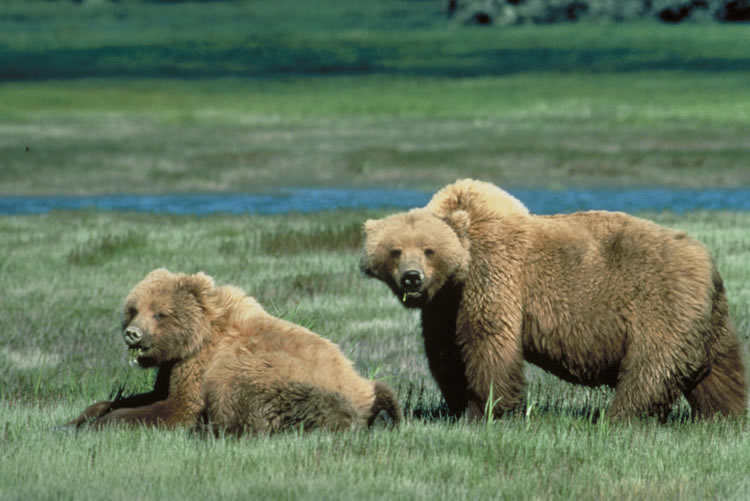Form and Function
Grizzly bears' environments have been drastically cut in size over the
years. They prefer to live in Whitebark Pine forests, but these types of
habitats have been taken away due to climate change. These habitats have
been recently changing due to the warmer winter climates. Usually the harsh
winters protect these trees from the invasive pinebark beetle, but since the winters
have not been as cold as usual, it has allowed to beetles to infest the trees,
causing them to die (New York Times, 2011).
Grizzly bears have adapted to
these harsh winters by using hibernation. During the warmer months of the
year, the grizzlies eat enormous amounts of food to build up their fat. They
then use all this extra fat to keep them warm and alive while they hibernate
all winter. Grizzly bears have extremely sharp teeth which come in handy
when they are eating and tearing through meat. They have very large rounded
claws and a large mass of muscles on their backs to help them dig the dens
that they use for hibernation (Cushman, 2011).
Today grizzlies are only found in about two percent of their
original range in the lower 48 states. Since most of the grizzly bears’ habitats
are being taken over by the construction of new houses and cities, and
because of the construction of new oil and gas mines, these animals are now
being forced into recovery zones. They are being put into these zones to get
their population numbers up, since they are endangered. Also, they are
relatively free of human disturbance in these areas (U.S. Fish and Wildlife
Service, 2000).
When choosing habitats, grizzlies
mostly care about land-cover, elevation, aspect, and vegetation
(Milakovic, 2012). Grizzly bears have an extremely strong sense of smell,
which helps them out tremendously when they are searching for food. They are
able to detect food from long distances. They have four legs and run at speeds up to 35 miles per hour.
Grizzlies tend to stay down on all fours, unless they are up in the air
sniffing out food or making themselves appear bigger when they sense that
their young cubs are in danger (Cushman, 2011).
U.S. Fish and Wildlife Service
Home
Interactions with Other Species
